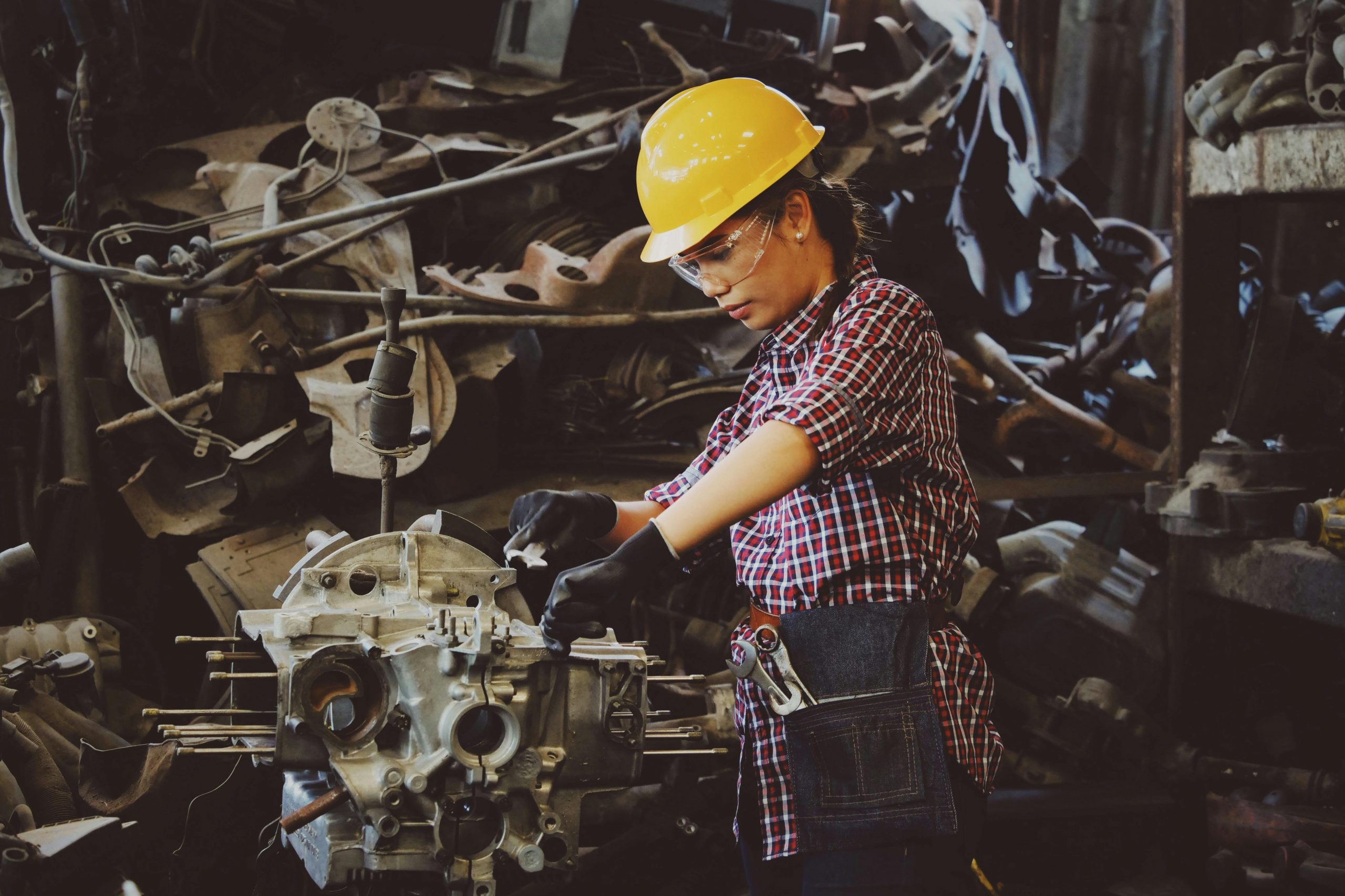
A woman wearing a hard hat and safety glasses working on an engine. Image from Chevanon Photography under Pexels license.
Unionizing and strikes continue to maintain headlines, but labor unions and strikes have been intertwined with American industry for decades. That said, many of these historic strikes have been by unions representing traditionally male-dominated positions, whereas today women are increasingly taking on unionizing challenges. This changing gender balance was recently highlighted by Margarita Torre in her recent study.
Torre analyzed the General Social Survey data from 2002-2021 and found that supportive attitudes around labor unions have increased across the board. Younger women, women with less than a high school education level, and those in female-dominated occupations were even more favorable towards unions compared to other groups of women.
There are good reasons for this. Historically, as Torre writes, women have “tended to work in a much narrower range of occupations than men and are overrepresented in low-paying, part-time, and temporary jobs with fewer opportunities for advancement.” Unions provide greater benefits (healthcare or retirement plans) and higher wages which can help reduce gender inequality in the workforce, especially in labor markets that offer a wider range of job opportunities and hours compared to previous decades.
Race is also a big part of the story. About 11% of Black women in the U.S. are part of unions, higher than both White and Hispanic women. Women and people of color stand to benefit greatly from joining a union as particularly vulnerable groups.While only about 4% of 24-year-olds and younger express their intention of joining a union when entering the workforce, Torre explains that the favorability of unions among young women may increase as more women enter the workforce and begin to see the benefits of unionization.

Comments